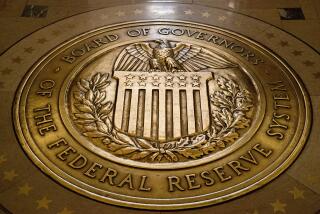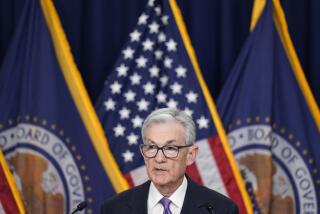Fed minutes show increasing division on stimulus
WASHINGTON — Federal Reserve policymakers are increasingly divided on the central bank’s bond-buying stimulus, with more officials than previously thought wanting to pull back very soon.
About half of the Fed’s officials believe the program should be halted by the end of the year, according to an account of their last meeting in mid-June. At that meeting, a few participants even wanted to see the purchases slowed or stopped immediately.
But the minutes, released Wednesday with the customary three-week lag, said that “many other participants anticipated that it likely would be appropriate to continue purchases into 2014.”
What’s more, many Fed members expressed a desire to see further improvement in the labor market outlook before slowing the pace of bond purchases from the current level of $85 billion a month.
“The minutes released today muddy this picture and suggest far less consensus about the policy decision at the June meeting than was apparent at the time,” said Michael Gapen, an analyst at Barclays Bank.
The names of the Fed officials aren’t identified, so it isn’t certain where the most important voice in the committee stands, that of Fed Chairman Ben S. Bernanke.
But after the last policy meeting, Bernanke laid out a plan for a likely tapering of the bond-buying this year. He suggested, though, that the Fed would not shut it down until the middle of next year, so long as the economy continued to improve and the jobless rate, currently 7.6%, drifted down to about 7% by then.
Bernanke’s comments then came amid increasing angst in financial markets about the future of the Fed’s stimulus, which has helped keep rates low and spurred investments and stock prices.
With bond yields rising suddenly, Bernanke and other Fed officials also have sought to calm investors by distinguishing between their bond-buying program and the benchmark short-term interest rate that the central bank controls, which has been held near zero since late 2008. Although these are separate Fed policy tools, analysts believe many investors have confused the two.
Bernanke noted this distinction at an economic conference Wednesday, saying the central bank could maintain its ultra-low short-term interest rates beyond the publicly stated trigger of 6.5% unemployment rate, expected to be reached in 2015.
The release of the Fed minutes brought a muted reaction on Wall Street, indicating that investors did not see any fundamental change in the outlook, which remains uncertain because monetary policy is contingent on economic and financial trends.
Many analysts still think the Fed is likely to announce a slowing in the bond purchases as early as at its September meeting, especially after the surprisingly solid jobs growth of 195,000 in June.
That employment report was released after the Fed’s June 18-19 meeting. In the report, the government also revised up payroll gains in May and April to almost 200,000 for each of those months.
The recent job growth has been “somewhat encouraging,” Bernanke said Wednesday in Cambridge, Mass., after the markets closed. Bernanke also pointed to the improved housing market and financial situation of American households.
But the Fed chairman also said that “it’s too early to say we’ve weathered the fiscal restraint,” referring to the federal spending cuts’ effect on jobs and the economy. He said the unemployment rate probably understates the weakness of the labor market.
Martin Schwerdtfeger, a senior economist at TD Bank, concluded that it “is still far from certain” that the Fed will start dialing back the bond purchases in September.
“All in all, the minutes reinforced the message that tapering, when it happens, will be a gradual reduction of monetary stimulus, which, critically, remains conditional on the U.S. economic recovery showing ongoing improvement,” he said in a note to clients.
The minutes do make clear that many of the Fed’s voting members would like to wait for further improvement in the labor market to avoid tapering too soon.
“Some added that they would, as well, need to see more evidence that the projected acceleration in economic activity would occur, before reducing the pace of asset purchases,” the minutes said.
Economic growth has been sluggish this year, and some analysts don’t think the recent step-up in hiring can be sustained.
But assuming that job growth stays on track in July and August, the Fed looks set to cut the bond purchases in September, when the Fed will issue an updated economic forecast and Bernanke will hold a news conference and explain any new policy actions.
The Fed started the latest round of large-scale asset purchases in September, and the effort is “fully in line for an initial tapering” this September, said Chris Rupkey, chief financial economist at the Bank of Tokyo-Mitsubishi in New York.
The increasing split in the Fed, however, makes future decision-making more difficult to read, especially since Bernanke is known for his consensus-building style. The minutes provided no information on how much the Fed might reduce its bond purchases.
One thing that Fed officials did agree on at their last meeting: “The committee should provide additional clarity about its asset purchase program relatively soon,” the minutes said.
More to Read
Inside the business of entertainment
The Wide Shot brings you news, analysis and insights on everything from streaming wars to production — and what it all means for the future.
You may occasionally receive promotional content from the Los Angeles Times.











